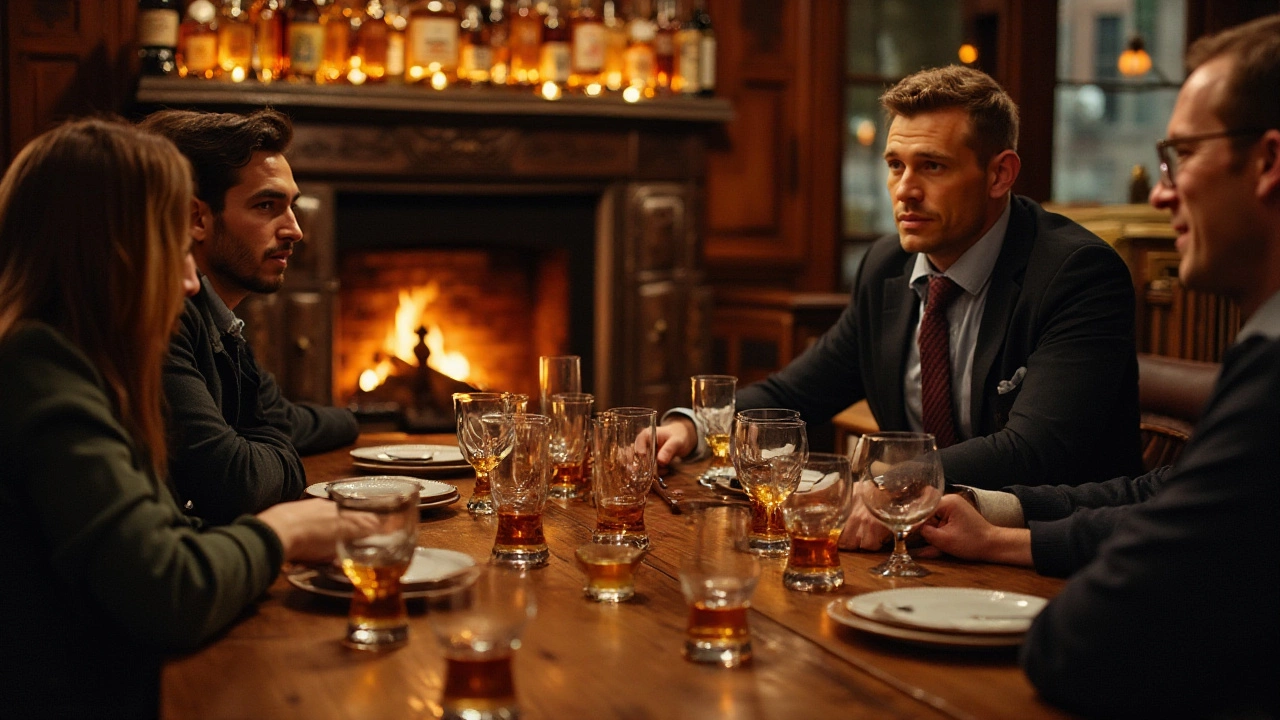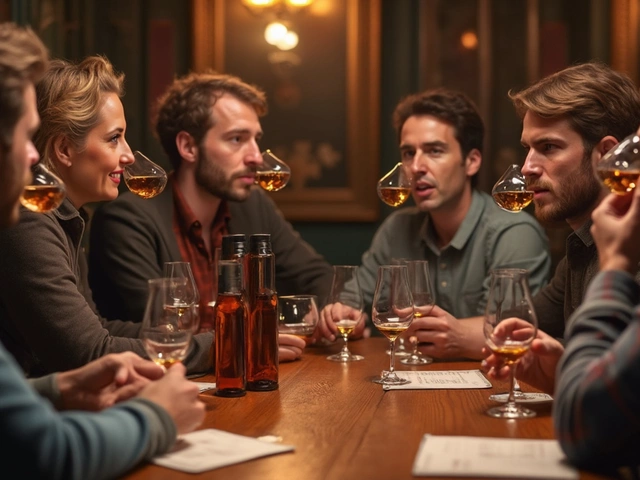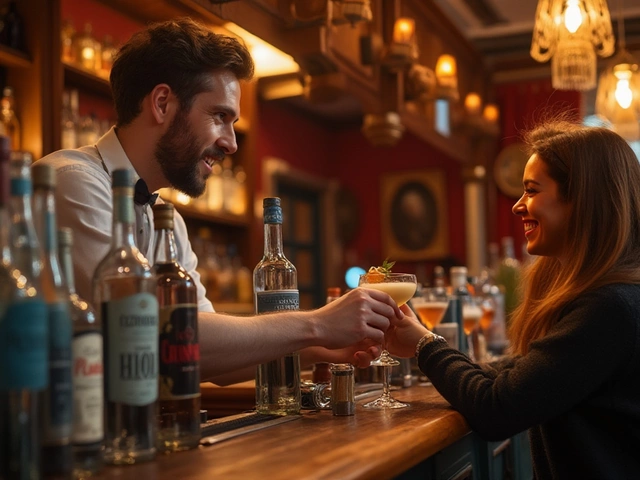In the realm of spirits, whiskey stands out as a distinguished blend of character and complexity, worthy of exploration beyond mere consumption. Whiskey tasting, an art cherished by many, invites you to embark on a sensory voyage where every sip tells a story. It brings forth not just the warmth of the liquid, but also a rich tapestry of flavors and aromas waiting to be discovered.
For those who haven’t dived deep into this world, the misconception might be that whiskey tasting is reserved for the connoisseur or the pretentious. Yet, it’s truly an experience for anyone willing to engage their senses. From swirling the amber liquid to catching the nuances in its scent, whiskey tasting is about savoring what’s in the glass while understanding the craftsmanship behind it.
Embarking on a whiskey-tasting journey doesn’t require much—just a curious palate and a spirit of adventure. Whether sitting in the comfort of home or joined by friends at a tasting event, each session is about expanding your palate and gaining insight into what makes each bottle unique. Ready to swirl, sniff, sip, and savor? Let's delve into the captivating ritual of whiskey tasting.
- The Art of Whiskey Tasting
- Developing Your Tasting Technique
- Finding the Right Whiskey
- Beyond the Glass: Tasting Events
The Art of Whiskey Tasting
Whiskey tasting transcends the simple act of drinking; it’s an eloquent celebration of skill, history, and culture contained within a glass. Often romanticized, this practice requires more than just sipping—it involves engaging all the senses to appreciate the intricacies of this storied spirit. Whether you're a seasoned connoisseur or a novice just starting in the world of whiskey, understanding the nuances can greatly enhance your overall experience. The process begins long before the whiskey touches your lips. The first step is selecting your whiskey of choice, be it a smoky Islay scotch, a smooth Irish whiskey, or a rich bourbon from Kentucky.
Once your glass is poured, the initial inspection happens visually. Whiskey's color offers the first insight into its character; often telling a tale of its age or type of cask used for maturation. Lighter hues might suggest younger spirits or those matured in American oak, whereas deeper, richer shades could indicate extended aging in sherry casks. The next step is the swirl, designed to awaken the alcohol and release aromatic compounds that rise and greet the nose. Here, the magic of distilled grains expresses itself in countless possible scents: vanilla, caramel, smoke, spice, fruit, and more.
The olfactory system, more powerful than many realize, plays a critical role in the whiskey tasting process. The nose captures subtle notes that shape the experience before a single drop is savored. At this point, take your time and breathe it in gently, being mindful of the alcohol strength which can sometimes overwhelm. Experienced tasters often speak of the pleasure derived from this phase alone, likening it to entering an aromatic symphony, each scent a different note contributing to the whole symphony.
"Whiskey is liquid sunshine." - George Bernard Shaw
Next, the journey continues with tasting. Here, small sips suffice to coat the palate, allowing flavors to unfold sequentially rather than all at once. It’s in this very moment that you’ll truly interact with the whiskey, as the anticipation builds to a crescendo upon that initial flavor burst. The tongue can detect a multitude of profiles from sweet to salty, bitter to umami, each altering based on the whiskey's origin and the grains used. A smooth bourbon may evoke honeyed sweetness, while a peaty Scotch might conjure images of smoky bonfires by the sea.
The final act in this sensory exploration is the finish—where whiskey leaves its mark long after it’s been swallowed. Some linger briefly but delight with an immediate aromatic tail, while others provide a prolonged and evolving conclusion. Enthusiasts often relish this lingering warmth, the last embrace of the whiskey experience. It's here where the spirit truly speaks to its drinker, finalizing the narrative of craftsmanship embedded in those coveted liquid drops. With each session, the only certainty is that the art of whiskey tasting is endlessly fascinating, waiting to be rediscovered one sip at a time.
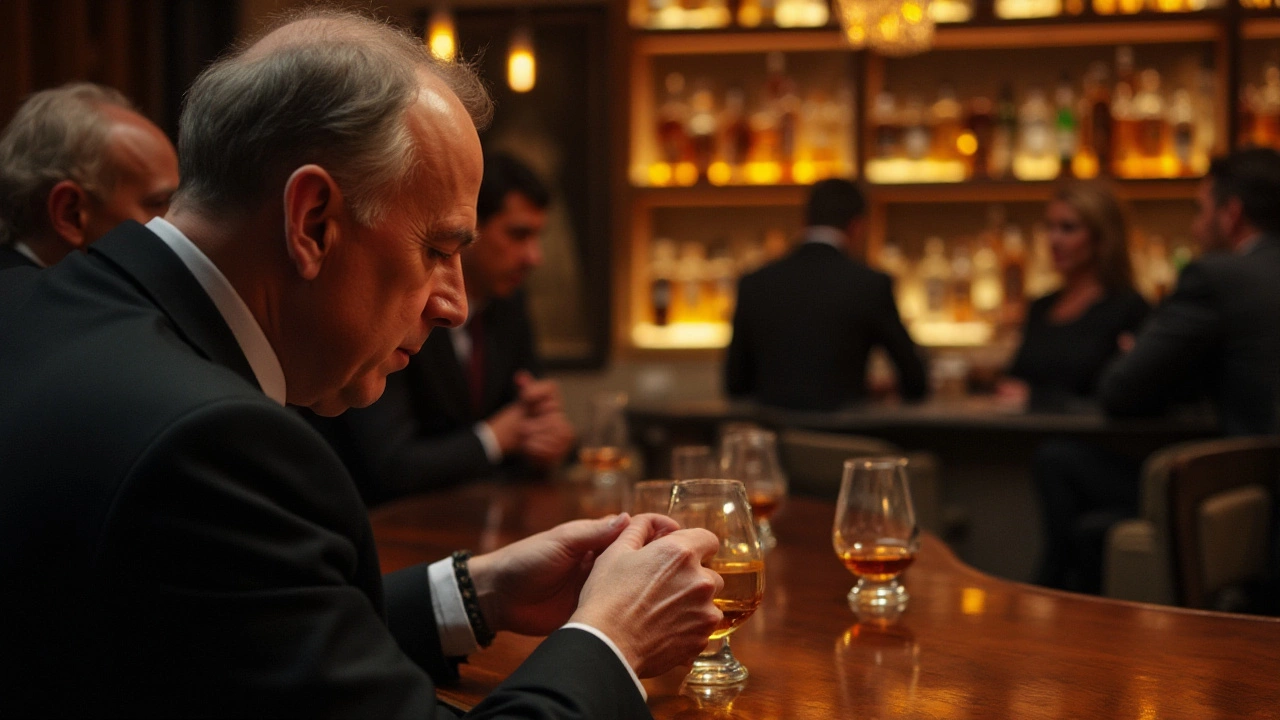
Developing Your Tasting Technique
Diving into the art of whiskey tasting is like unlocking a new world filled with rich aromas and diverse flavors. The journey to mastering this craft is both an educational and sensory experience that elevates the appreciation of each glass. To begin, it’s essential to set the right environment; select a quiet place free from overpowering smells that might interfere with your experience. Choosing a glass that narrows at the top, like a tulip glass, helps concentrate the aroma, allowing you to catch the most subtle notes when you bring it closer to your nose.
Start with the observation. Hold the glass at eye level and take note of the whiskey’s color. Its hue can give clues about its age and the type of barrel in which it was matured. Swirl the liquid gently. This coats the sides of the glass and gives some indication of its viscosity or what aficionados refer to as the whiskey’s “legs.” These first visual impressions set the stage for what the taste and aroma might bring. A deeper shade might suggest a more robust flavor profile, often hinting at a longer maturation period.
Engaging the Senses
Once you’ve satisfied your visual curiosity, it’s time to engage your sense of smell. Bring the glass slowly to your nose and inhale gently. Don’t rush this step; let the aromas unfold gradually. See if you can distinguish between different notes such as vanilla, spice, fruits, and oak. Whiskey’s rich tapestry of smells is unique to each type, and taking your time will allow you to enjoy the full spectrum. According to renowned whiskey expert Richard Paterson, "Whiskey is about the nose. Spend more time nosing your whiskey than you do drinking it."
Next, it’s time to taste. Take a small sip and let it roll over your tongue. Notice the initial flavors and how they develop. Does the taste evolve, revealing second or third notes? This stage is where your palate becomes a canvas for the whiskey’s complexity. Pay attention to the balance of sweet, bitter, salty, or spicy elements. Are there flavors you recognize, or does it remind you of something new? Each sip should be a discovery, unraveling the intricacies of the whiskey flavors.
Refining the Technique
As your tasting technique develops, embrace the practice of repeated tasting to uncover nuances you might have initially missed. Keep a journal to document your experiences. Note down the whiskeys you’ve tasted, your observations on aroma, flavor profile, and even how the whiskey makes you feel. Over time, you’ll start noticing patterns and preferences, deepening your appreciation and understanding. Some enthusiasts even suggest taking inspiration from food pairings. Experiment with small bites of dark chocolate, nuts, or cheese to see how they complement or contrast with the whiskey. Such pairings can highlight different aspects of the beverage, rounding off the tasting with a new dimension.
Lastly, join a tasting group or attend whiskey events if you can. Engaging with others who share your interest offers fresh perspectives and encourages lively discussions that may shed light on flavors you never considered. Whether you’re savoring a single malt from Scotland or a bourbon from Kentucky, the shared experience can enrich your journey. Keep in mind, everyone's palate is unique, and there’s no right or wrong way to enjoy whiskey. The goal is to enhance your sensory skills and, most importantly, to have fun exploring the world of this noble spirit.
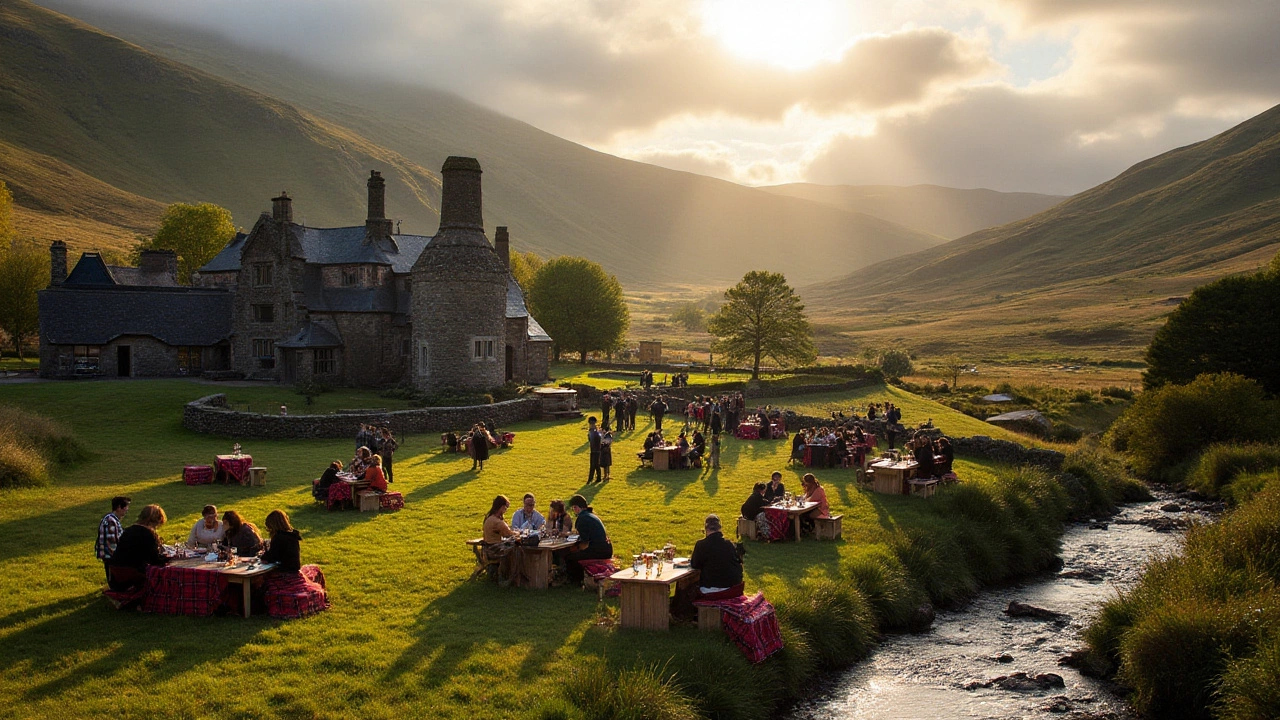
Finding the Right Whiskey
Choosing the right whiskey can feel like navigating a labyrinth of flavors and origins, but with a little guidance, it becomes a rewarding endeavor. The first step in finding your ideal whiskey involves understanding the main styles: Scotch, Bourbon, Rye, and Irish. Each of these brings with it a heritage and taste profile that's unique and carries centuries of tradition. Scotch whisky, for example, often varies significantly based on the region it's distilled in, from the peaty depths of Islay to the light, floral notes of the Highlands. On the other hand, Bourbon delivers a sweeter palette with notes of vanilla and caramel, attributed to the charred new oak barrels used in its aging process.
Once you grasp the broad categories, it's time to consider what you personally enjoy. Are you drawn to the smoky and robust, or do you favor the smooth and sweet? Don’t hesitate to sample—many whiskey bars and stores offer tasting flights to help you explore different expressions without committing to a full bottle. During this exploration, taking notes can be beneficial, jotting down impressions of specific flavors or brands to remember what stood out to you. Some enthusiasts suggest a whiskey journal as a means to deepen your tasting experience.
Experiment and Explore
While finding the right whiskey might seem daunting, the process is about exploration and joy. Consider hosting a whiskey tasting with friends, where everyone brings a different bottle to try. This can broaden your exposure and help refine your preferences. When possible, pair your whiskey with food. A well-chosen selection of cheese or chocolate can enhance or contrast flavors, offering new dimensions to your whiskey-tasting adventures."Whiskey is a journey, not a checklist," says whiskey expert Michael Jackson. "It’s about what it does to your senses and your enjoyment over being prescriptive about what's in the glass."Remember that, like wine, personal taste in whiskey can evolve over time. What might seem too strong or different on the first try may become a favorite as your palate matures and becomes accustomed to bolder flavors.
When buying whiskey, reliability is key. Research certain distilleries renowned for their quality and consistency. Seek out reviews and expert opinions to guide your choices, especially when looking to invest in pricier bottles. Whiskey often improves with age and becomes a valuable addition to any collection over time. Whether a seasoned taster or a newcomer, the world of whiskey is vast, rewarding, and ripe for discovery—a true testament to the art of whiskey tasting.
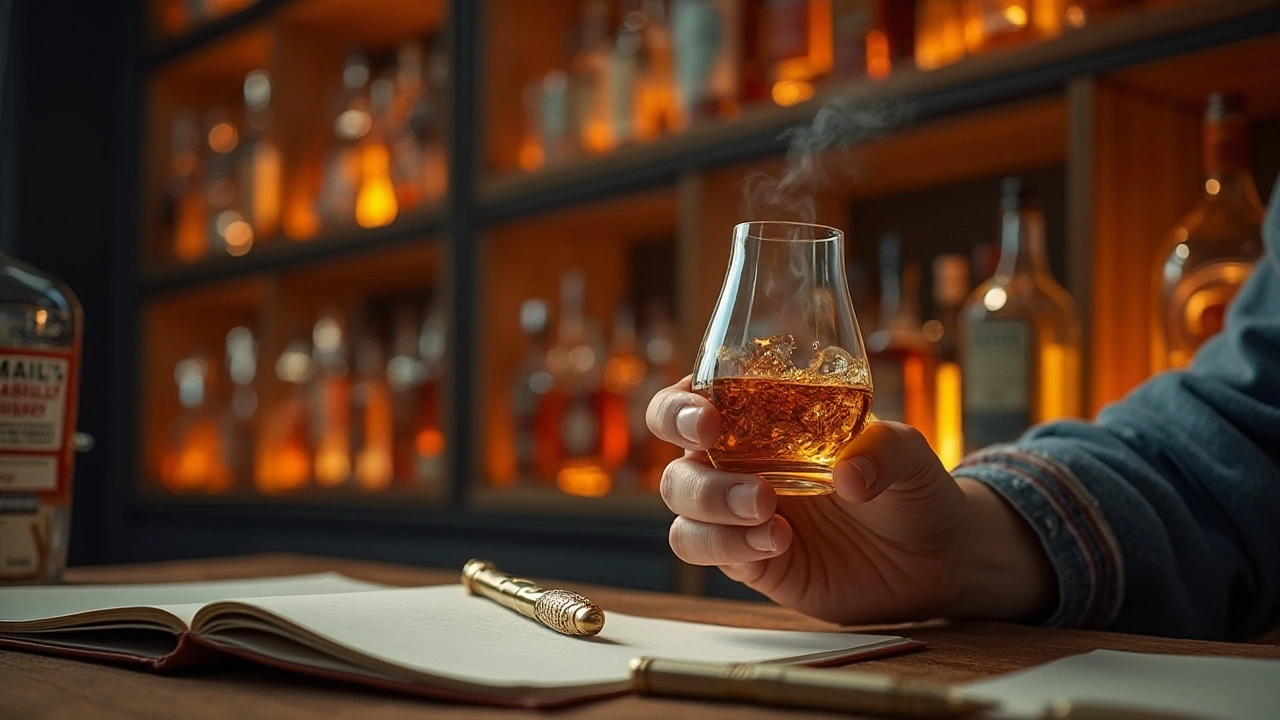
Beyond the Glass: Tasting Events
The world of whiskey tasting events opens up a realm of possibilities for both newcomers and seasoned aficionados craving new experiences. These gatherings are more than just an opportunity to sip fine spirits; they serve as educational platforms, social hubs, and celebratory environments wrapped into one. Whether organized as grand festivals or exclusive small group sessions, each event presents its own flair. Imagine stepping into a ballroom with rows of distiller booths, each offering a distinct selection—from single malt Scotch to robust bourbons. Upon entering, the hum of conversation envelops you, punctuated by the clinking of glasses and animated discussions about aging processes, flavor profiles, and brand histories.
The setting often plays an integral role in enhancing the whiskey tasting experience. Some events occur in historic distilleries where the walls themselves tell tales of decades, if not centuries, of craftsmanship. Others might be held in modern venues that add a contemporary twist. Whiskey appreciation is elevated when knowledgeable guides and enthusiasts are present. Many events feature masterclasses led by industry experts who unpack the complexities of whiskey-making, from barley to barrel. Such classes often include interactive components, like the opportunity to blend your own whiskey—a cherished souvenir and learning experience all rolled into one.
"Participating in a whiskey tasting event is like embarking on a voyage through a library of flavors," says renowned whiskey expert Richard Paterson. "Each glass holds a chapter of history, culture, and passion."
Social connections blossoming over shared interests are another hallmark of tasting events. Engaging conversations with fellow attendees who share an appreciation for the nuances of whiskey can lead to lifelong friendships or professional connections. These gatherings attract a diverse crowd, from passionate hobbyists to industry professionals, making them a melting pot of knowledge and stories. Moreover, many tasting events incorporate food pairings, which further elevate the experience with expertly matched flavors enhancing the whiskey flavors.
In recent years, the rise of virtual tasting events has revolutionized how enthusiasts experience whiskey without the necessity to travel. These virtual experiences allow participants to sample curated whiskey flights from the comfort of their homes, guided through tastings via live video sessions. While the ambiance might differ from in-person events, the learning and interaction components remain strong. An accompanying tasting kit is often delivered in advance, ensuring that participants have everything they need to fully engage in the experience. In both traditional and digital formats, whiskey tasting events continue to attract and nurture a global community of whiskey enthusiasts, each captivated by the enduring allure of this storied spirit.
